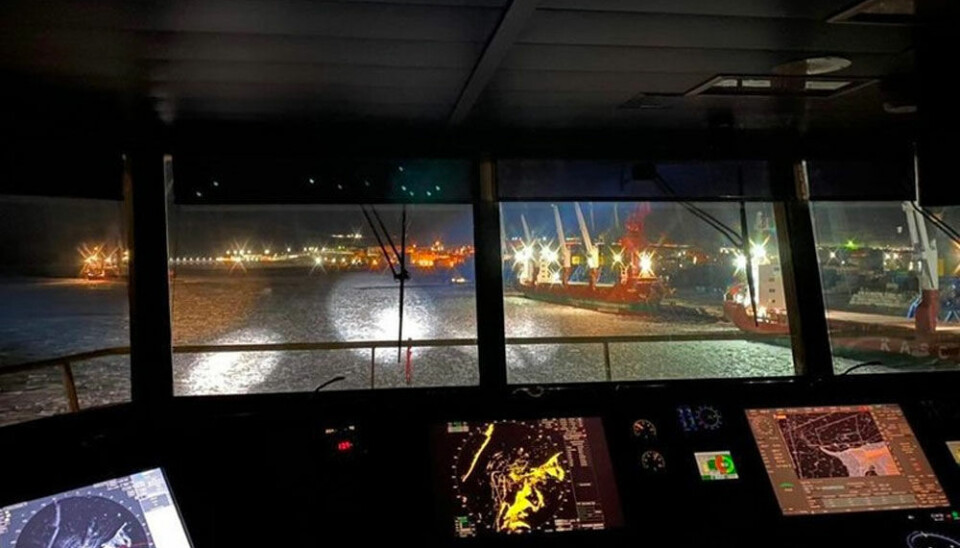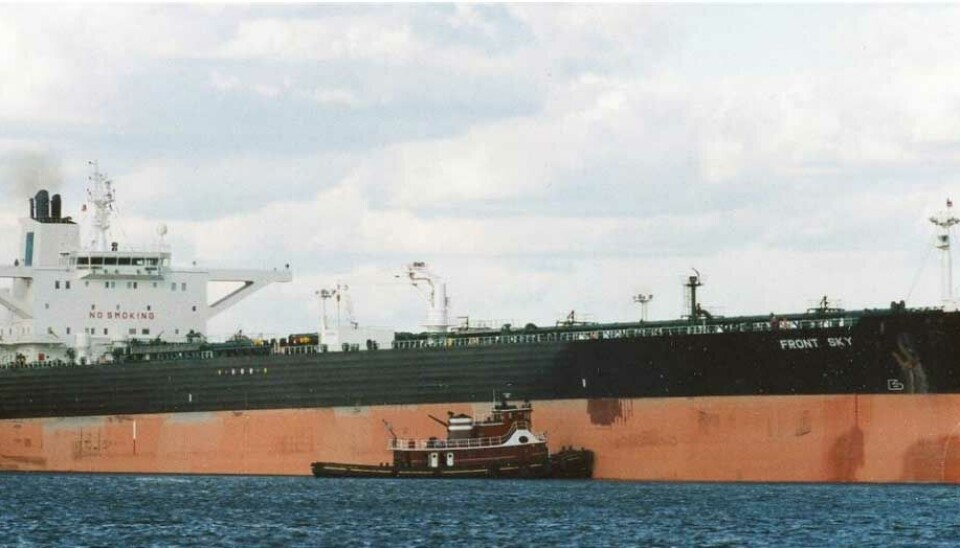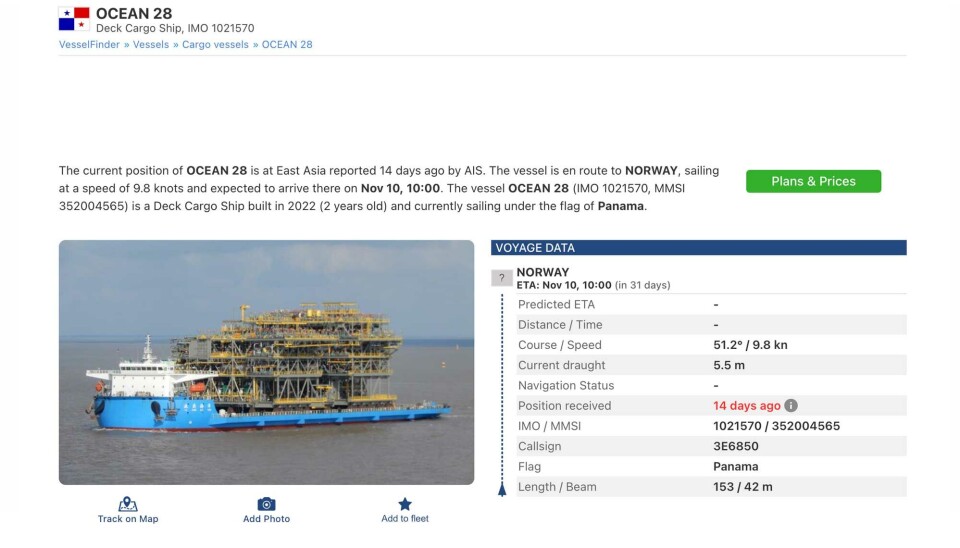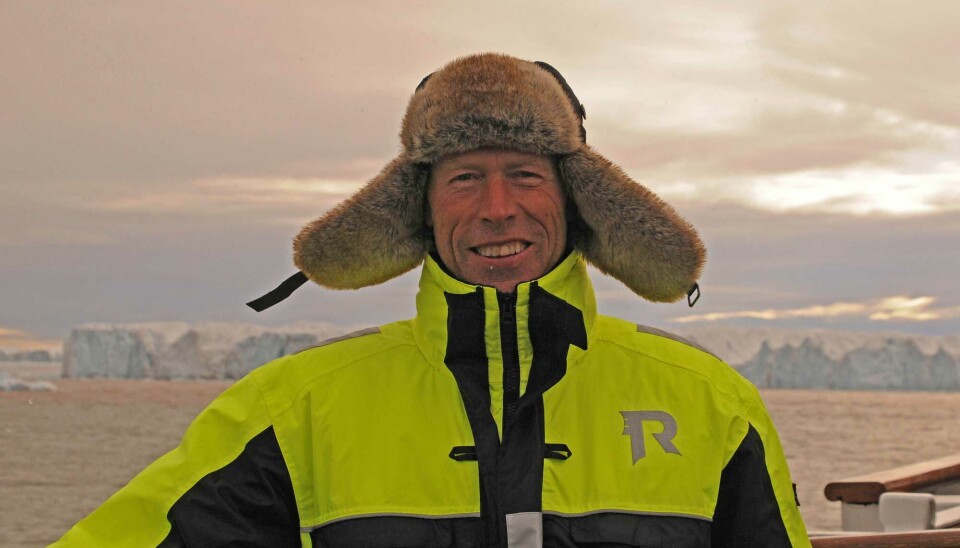
"The Russians are compromising security on Northern Sea Route"
Despite rapidly freezing Arctic waters, Moscow continues to send more than 20 years old ships without ice class to the Northern Sea Route. "They are compromising security," a Norwegian professor in ice navigation says.
Winter is quickly approaching in the Arctic and large parts of the far northern shipping route that connects the Pacific with the North Atlantic will soon be covered by a solid layer of sea-ice.
Nevertheless, there is still a significant level of shipping activity in the area. According to the Northern Sea Route Administration, the Russian route management authority, there were in the second week October more than 60 ships sailing in the area between the Bering Strait and Barents Sea.
Far from all of them are built for shipments through rough Arctic waters. A closer look at the vessels shows that a big number of them have either minimal ice-class or no ice class at all.
At least 11 of the vessels that have sailed transit across the route since the beginning of October have no ice-class whatsoever. Most of them are bulk carriers, among them the Platos, Portia, Dodo, Great Wenchang, Libra-XS, Smoke, Tand Land. But there were also oil tankers.
Neither the Aquatica, nor the Meru, have hulls made for icy waters and risk serious damage and accidents in the area. The two tankers are 243 and 274 meter long respectively, have a deadweight of 106,061 tons and 159,999 tons. They are sailing under the flags of Panama and Sierra Leone.

Judging from information from the Northern Sea Route Administration, both tankers made it across the route from east to west in late September or early October. They are 19 and 24 years old.
There are also a zero ice-class container ship, as well as a heavy lift vessel, now sailing in the area. Container carrier NewNew Panda 1 is 264 meter long and is sailing from Nansha, China, to St.Petersburg. Heavy lift carrier Ocean-28 is on its way from Zhangjiagang, China.
According to ship tracking services, the latter's destination is a port in Norway.

In addition to the ships with zero ice-class, there are also a number of bulk carriers, tankers, container carriers and heavy lift vessels with the very low ice-classes Ice1 and Ice2.
According to Professor Norvald Kjerstad, Russian authorities are now compromising on security in the remote and icy Arctic waters.

"It seems like the Russians now completely ignore the security requirements that used to be normal."
Kjerstad explains that even Ice1, the low Russian ice-class, is far from what is sufficient for sailing on the Northern Sea Route, even in summertime.
The professor in nautical science at the Norwegian University of Science and Technology (NTNU) underlines that the shipping companies now take big risks.
"None of these ships have so-called winterisation, which is normal for ships operating in cold climate," he says to the Barents Observer. "Any responsible ship owner would have applied ships with winterisation to meet the risk management requirements of the ISM Code [International Safety Management Code].
The code is part of a safety system developed by the International Maritime Organisation (IMO).
Kjerstad also doubts that the ships meet the requirements of the IMO Polar Code.
"It is an international demand that ships entering this region must meet the requirements of the Polar Code, which includes a separate Polar Certificate, training of captains and crews and more. The Code came into force on 1st of January 2017 and Russia has joined the requirements," the professor explains.
He says that he can not exclude that the ships have Polar Code Certificates, but feels "pretty sure that this is not the case."
Many of the ships now sailing on the Northern Sea Route are part of the "shadow fleet" established in the wake of Moscow'a full-scale onslaught on Ukraine and the introduction of international sanctions.
A big number of the vessels are more than 20 years old, and have recently been acquired by dubious and newly established companies. Both the Aquatica and the Meru, the two oil tankers, got new owners after 2022. Judging from the Northern Sea Route Administration, they are managed by companies registered in Azerbaijan.
The shady schemes are established to circumvent sanctions and bring Russian raw materials and goods to buyers across the world. By changing ship names, concealing the the actual owners and sailing under Flags of Convenience like Sierra Leone or Gabon, war aggressor Russia and its proxies continue to do business and make revenues.
But risks are high. Sailing in icy waters with unprotected ships could easily lead to accident and evenS catastrophe.
As the ageing ships now make their way across the remote Arctic route, the sea-ice is rapidly expanding over the waters. Data from ice-mapping services show that several parts of the Northern Sea Route already are covered by ice. The Chukchi Sea has had a belt of multi-year sea-ice through the whole summer and that belt is now expanding. The ships will soon have to break through sea-ice also in the Vilkitsky Strait and several more parts of the route.
It is only three years since a rapid and unexpected freeze of the sea-ice led to a serious crisis on the Northern Sea Route. In early November 2021, more than 20 ships got stuck in the ice and it took several weeks to get out all the captured sailors and ships
Russia is today building up a new and more powerful fleet of icebreakers. At the same time, it appears to build down its requirements for safe sailing along the icy Arctic coast.













